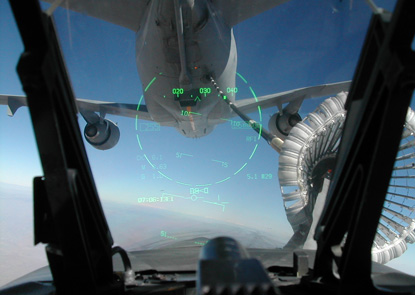Dynamics & Control
Dynamics and control of systems and system components, with the incorporation of human operator dynamics.
The dynamics and control of aerospace vehicles has been a core capability of Systems Technology since we began. The projects range from developing, simulating, and analyzing the system dynamics; estimating and/or identifying system parameters; developing performance and stability requirements; synthesizing control system concepts; and auditing existing systems (See Engineering Audits). In addition to complete systems, Systems Technology is often involved with the dynamics and control of significant vehicle components such as actuators. Recent and ongoing work includes actuator health monitoring and measurement of aircraft buffet loads using existing control surface actuator sensors.
Development, analysis and validation of models
The vehicles models that we work with range from first principles physics models to very high order combined finite element and computational fluid dynamics models. Using a range of model fidelity is important for model validation, including that important first step of demonstrating “face validity.” Literal analysis of low order models remains an important way to track vehicle and controller parameters through to closed-loop performance. Low and modest order models, from tens to hundreds of degrees of freedom, are important for flight control design and simulation.
Systems identification and other data analysis
For system identification and other types of data analysis, we work primarily in the frequency domain, either using single-input-single-output transfer functions or the modern, multivariable linear fractional transformation (LFT) architecture. Time varying phenomena such as pilot behavior are tracked using either time domain analysis or the combined time and frequency domain wavelet transforms. “Goodness” measures such as coherence are a standard part of our analysis, with the modern extension being the development of uncertainty models.
Incorporation of human operator dynamics
A key capability and what we are perhaps best known for is the incorporation of human operator dynamics into the combined pilot-vehicle system. The foundational principle is McRuer’s Law, named after our founder, Duane McRuer. The pilot-vehicle system work ranges from the development and certification of handling qualities requirements, including manned simulator and flight test programs; workload analysis, including the design and modification of flight control systems that reduce pilot workload; to the analysis of pilot-induced oscillations and the design of mitigation techniques that reduce the tendency for this type of adverse pilot-vehicle coupling.
Download Systems Technology Publications:
– Classic STI Papers
– Systems Identification
– Aircraft Handling Qualities and PIO
Systems Technology has explored the complex dynamics of probe-and-drogue aerial refueling as a manual control and autonomous systems task.
